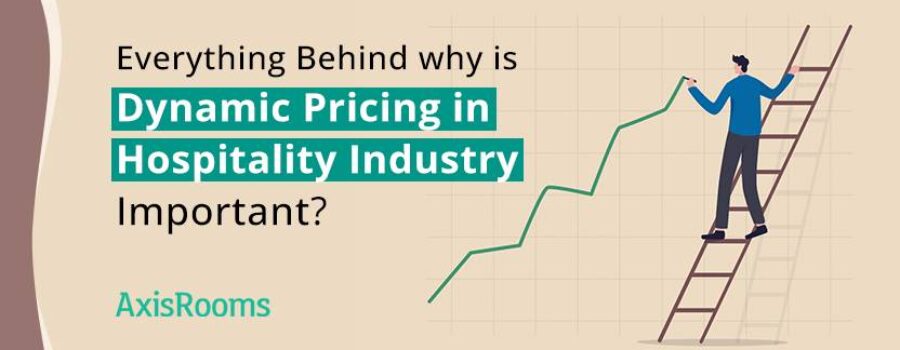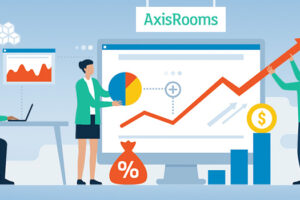Why Is Dynamic Pricing in Hospitality Industry Important?
The fluctuating demand for rooms has forced businesses to focus on optimizing their revenue modes. And dynamic pricing in hospitality industry is one of the key players that can help you adjust to the changing demands of hotel rooms.
Why?
Because if you are not changing your hotel room prices according to the demand in the industry, you miss out on great revenue opportunities that can help you book great profits.
Switching towards hotel dynamic pricing, you integrate an adjustable pricing model that can help you grab the opportunity in the market.
But how can you handle hotel price changes now and then?
With the assistance of a robust dynamic pricing strategy and powerful hotel dynamic pricing software, you can have it all under your control.
You escape the hassle of manual monitoring of your room prices and set an automatic price update based on the demand in the local market.
But that’s just peeling the first layer of the onion. Let’s dive deep into the importance of dynamic pricing in the hospitality industry and understand the nitty-gritty elements.
What Is Dynamic Pricing?
Standing out from the traditional static hotel pricing approach, a dynamic pricing strategy in hotels can help owners adjust rates based on the dynamic demand and conditions of the local market.
It’s one of the core elements of modern-day revenue management that enables hoteliers to manage room inventory and pricing to boost hotel profitability and revenue.
If we boil it down, the primary focus of dynamic pricing in hotels is to price the room at the best and highest possible rate based on the current market scenario.
If the demand is high, the prices go up, and if the footfall is less, the prices are automatically adjusted. You need to implement a reliable and powerful dynamic pricing strategy to maximize the output and avoid hiccups or troubles.
But what’s the reason behind that?
Have a look.
Why Is Dynamic Pricing Strategy Important for Hotels?
Dynamic pricing can be spotted in other industries like airlines, sports, local grocery, cab rides, and others because it depends on the simple demand and supply mechanism.
With the fluctuation in every industry, consumers now expect no exception in the hospitality industry. Your competitors have adapted to the dynamic pricing and would have their room prices in sync with the market.
So, you don’t want to be left behind, right?
Let’s discuss the strategies for dynamic pricing in the hotel industry.
Simple Yet Effective Dynamic Pricing Strategies You Can Use
What could be the reason behind a wide acceptance and continuation of the fixed price for hotels in 2022?
The most common reason that can be filtered out is the lack of awareness on how to position the dynamic price of hotels. No hotelier wants to overcharge or undercharge.
So hoteliers avoid taking the risk of tweaking their hotel prices.
By switching to a dynamic pricing model, here’s what you can do.
-
Adjust pricing based on occupancy
As the demand goes up, you need to increase the prices of your hotel rooms. Following a measured approach with the dynamic rate can be better when the market witnesses a spike in demand.
If occupancy rises to 50%, you give another boost of a 10% hike in the room price. If your booking slows down, you can choose to lower the price. Because it’s advisable to sell room bookings at discounted rates rather than leaving a room unbooked.
The dynamic approach enables you to gain an average higher profit and revenue than the fixed rates.
-
Adjust stay restrictions
A lot of hoteliers globally focus on filling busy nights during the peak. But here, they miss out on the opportunity on days before and after the peak days.
Suppose you focus on booking quick one-night stays; you miss out on opportunities to attract customers with longer stays.
Using stay restrictions, you can give a boost to pre and post-peak days. Focus on giving preference to longer stays compared to one-nighters and set a minimum length of stay.
Even if you charge a comparatively lower price, you can add more occupancy to skyrocket your overall revenue. It’s the best available rate pricing strategy you can use to smooth out peaks and valleys in demand to drive increased overall occupancy.
-
Adjustment based on competitor activity
If you are unsure about the right pricing to be set on different days, you can check the competitor rates to get an overview. It’s 100% sure that the travelers might be doing it, so you should not hesitate to do the same.
You need to avoid situations where you are overpriced compared to your competitors, decreasing your chances of conversion.
Positioning your dynamic pricing based on the competitor’s approach can help you stay ahead of everybody and avoid missing out on different revenue-making opportunities in the local market.
To get a crystal clear idea about the market and prices, you need to focus on your compset (a group of five or more properties that are likely to attract a similar target audience).
A great tactic to boost your occupancy can be to lower your prices by 10% compared to the highest-priced competitor. Customers prefer hotels at affordable rates offering great amenities.
Competitor pricing gives a great indication of the market demand in the area and what price to charge before the peak days.
But you need a dynamic pricing revenue management system and a channel manager to handle the automation of your room pricing. You can’t rely on the manual handling of your dynamic pricing.
What’s Your Next Step?
The use of the latest tools and technologies available in the hospitality industry can help you integrate a robust dynamic pricing strategy into your hotel business.
But out of multiple tools, it can get expensive and hectic to integrate different tools from different vendors with different complexities.
So what is a better thing to do?
You can rely on technology brands like AxisRooms to get tailored solutions to your major and minor hotel distribution, operations, pricing, and other problems.
With a dedicated channel manager, booking engine, vacation rental software, property management system, revenue management system, and rate shopper, it becomes easier to get the best hotel management tool in one place.
With the help of a powerful and clean dashboard, you can use different functionalities to enhance your hotel business operations and deliver dynamic and flexible pricing to your customers.
It can help you scale your revenue and profits and avoid missing out on the opportunities available in your local market.
With 24*7 customer support service, you can resolve hiccups or problems while using the tool.
If you feel skeptical about relying on the output AxisRooms can give, you can access the demo version to get a hands-on experience of the tools before making the final decision.




